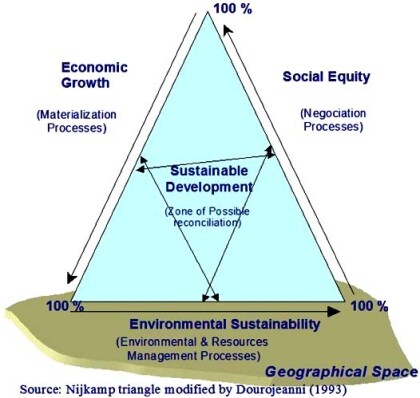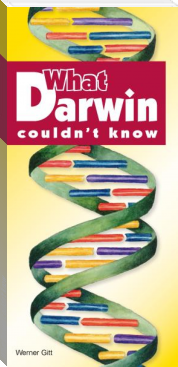Community Empowerment, Dr. SBM Prasanna, Dr. K Puttaraju, Dr.MS Mahadevaswamy [most inspirational books of all time .TXT] 📗

Book online «Community Empowerment, Dr. SBM Prasanna, Dr. K Puttaraju, Dr.MS Mahadevaswamy [most inspirational books of all time .TXT] 📗». Author Dr. SBM Prasanna, Dr. K Puttaraju, Dr.MS Mahadevaswamy
Details of the Children mainstreamed in to Government schools from the Chilipili Child laborers special schools
Sl. No
Year
Village
No of children attending
No of students mainstreamed
Boys
Girls
Total
1
2000-2001
Markadinni
50
9
11
20
2
2001-2002
Thoranadinni
50
8
12
20
3
2002-2003
Thadakal
50
5
21
26
4
2003-2005
Byagavata
50
14
24
38
5
2005-2007
Bagalavada
50
19
19
38
6
2007
(June–Dec)
UmboliHosur
(6 months)
50
…
…
50
7
2008-2009
Potnal
50
7
7
11
8
2009-2010
Potnal
50
23
23
50
Total
400
85
117
215
Promoting Livelihood Initiatives Through Chiguru:
Chiguru is a co-operative enterprise set up by JMS to develop supplementary sources of income for the rural poor in Raichur district.Chiguru has always been ‘a new shoot’ of hope and new life at JMS. Chiguru supports initiatives that:
have high employment generating potential and are labour-intensive
use natural, locally available resources
promote community health and wellbeing
promote co-operatives that are operated and sustained completely by rural women
increase economic self-reliance by finding suitable alternatives to products that cause high indebtedness among rural communities
The Terracotta Unit (comprising of 15 women) launched in 2001, has had a turn-over of about Rs. 3 lakh and they have added quite innovative items to their jewellery. The women travelled to Delhi, Hyderabad, Chennai and Bangalore to participate in various exhibition cum sale events. The neem fertiliser unit, consists of 15 women, who every year prepare organic neem fertiliser and they have created a linkage with the farmers who purchase it for their farms. It is a very healthy relationship between agricultural labourers and farmers. They had a turn-over of 4 lakhs. The new additions to the productions were the bio-compost and vermin-compost. The neem fertiliser unit of Chiguru has ventured to purchase one-and-a- half acre land for their enterprise. They mobilised part of their resources from their savings and from the bank as loan. For the Dalit women who are landless, this was an important milestone in their journey and JMS supported this process.
The Chiguru herbal health care initiative was started by JMS to train the members in the identification of healing plants, diagnosis of common ailments and preparation and administration of herbal medicines. These ‘Sangathan doctors’ effectively meet the primary health care needs of their families and communities through low cost natural remedies. Chiguru’s most popular products are such as Neem leaf oil,Vatanivaraka Pain Oil ,Thalispatradi Choornam, etc.
TRAINING FOR NORTH KARNATKA ACTIVISTS ON SPECIAL COMPONENT PLAN :
JagruthaMahilaSanghatan (JMS) hosted the state level training for activists from the field on Special Component Plan (SCP) and Tribal Sub-Plan (TSP) which are now known as SC Special Plan (SCCP) and ST Welfare Plan (STWP) on 13th & 14th January, 2012 at JMS training centre at Pothnal, Raichur. The training in which 44 activists from districts of Bagalkote, Koppal, Chitradurga and Raichur participated was organised by Thamate (Tumkur) and Mahaadiga Network with the support of Indian Social Institute, Bangalore and Human Institution Development Forum, Bangalore. The discussions included the historical background and the critical importance of SCP to the welfare of SC/ST communities.
Suggestions:
Meetings, orientation programs, workshops and seminars may be organized where the members will get a chance to exchange their views and be able to develop their group strength by interactions.
Active intervention by district administration, professional bodies and voluntary organizations is precondition for the successful conception of empowerment through the micro finance in terms of skill training, asset building, enhancing decision making skills related to children, monetary issues, increasing literacy rate family planning awareness and girl child awareness can be created.
Conclusion:
The new millennium has thrown many challenges and new issues have to be addressed to effect social and economic progress of our nation. The most important one is women’s empowerment through self help groups. Processes of Jagrth Mahila Sangathan has undoubtedly begun to make a significant contribution in poverty alleviation and empowerment of poor, especially dalit women in rural areas of Raichur district who bear the burden of inequity in three fold way- as Dalits(i.e.caste), as women(gender), agricultural labourers(class).The important element of women’s leadership at the local level in community processes, in conflict resolution, in discussions and decision making has grown. The administration either in MGNREGA, ICDS, Panchayats now negotiates withwomen and recognizes them as leaders which is a significant process in JMS. In this regard investment in women’s capabilities and empowering them to achieve their choices and opportunities is the definite way to contribute to economic growth and overall development.
References :
Dasgupta.R “An Informal Journey through Self Help Groups” Indian Journal of Agriculture Economic, Vol.56, July-September, 2001.
Ravi V. and S.Ramesh “Impact Of Microfinance On Socio – Economic Status after joining SHG in Karnataka : A case Study”, Southern Economist , Vol 52, March 2014.
B. Siddappa “Self Help Groups in Karnataka: An assessment”, Southern Economist, Vol52 , September 2013.
P.K. Bhargava, N.V.Rajeshwari, R.V.Deshpande, V.B.Joshi (2005),”Evolution Of Community Monitoring Project in Rachur and Gulbarga districts, Karnataka”, PRC report No 141,population Research centreand JSS Institute Of economic Research, Dharwad.
Arunachalam Ramesh.S (2011) ,”The Journey Of Indian Micro Finance:Lessons For the Future”,Aapti publications,Chennai.
SUSTAINABLE DEVELOPMENT IN A GLOBALISING WORLD: ISSUES AND POLICY IMPLICATIONS
Asha.D. M.
Assistant Professor, Dept. of Economics, Government Women’s College, Mandya-571401
Abstract
This paper explains on the present, most important challenges of sustainable development viz Poverty and Population; Health and Education; Women empowerment; Finance and Trade; Science and Technology; Managing natural resources, pollution and climate change; Human security, terrorism, violence and conflict. The paper concludes that the world has made real progress in achieve sustainable development in the last 20 years. There is, however, far more to do in ensuring that the benefits of growth are distributed equitably, particularly in fast-growing middle income countries (MICs) like India. There are also big risks, including shocks in the world economy, potentially significant challenges of civil conflict and fragility, long-term resource scarcities and climate change. Policy needs to engage with change, focusing on the local, national and international level to achieve sustainable development globally.
Introduction:
Globalization as it is taking place today is increasing the divide between the rich and the poor. It has to be steered so that it serves not only commercial interests but also the social needs of development. Global business thrives on, and therefore encourages and imposes, high levels of homogeneity in consumer preferences. On the other hand, for development to be locally appropriate and sustainable, it must be guided by local considerations which lie in cultural diversity and traditions. Therefore recognition at the policy level, of the significance of diversity, and the need to preserve it, is an important precondition for sustainable development.
According to the classical definition given by the United Nations World Commission on Environment and Development in 1987, development is sustainable if it “meets the needs of the present without compromising the ability of future generations to meet their own needs.” It is usually understood that this “intergenerational” equity would be impossible to achieve in the absence of present-day social equity, if the economic activities of some groups of people continue to jeopardize the well-being of people belonging to other groups or living in other parts of the world.
For example, emissions of greenhouse gases, generated mainly by highly industrialized countries, lead to global warming and flooding of certain low-lying islands—resulting in the displacement and impoverishment of entire island nations. Or consider the situation when higher profits of pharmaceutical companies are earned at the cost of millions of poor people being unable to afford medications needed for treating their life-threatening diseases.
The famous Rio Declaration, adopted by the United Nations Conference on Environment and Development in 1992 (also called the Earth Summit, held in Rio de Janeiro, Brazil), puts sustainable development in this way: “Human beings are at the center of concern for sustainable development. They are entitled to a healthy and productive life in harmony with nature.”
“Sustainable” development could probably be otherwise called “equitable and balanced,” meaning that, in order for development to continue indefinitely, it should balance the interests of different groups of people, within the same generation and among generations, and do so simultaneously in three major interrelated areas–economic, social, and environmental (Figure.1).

Figure.1: Relation between economic, social, and environmental factors necessary for sustainable economic development.
Challenges and Opportunities:
Obviously, balancing so many diverse objectives of sustainable development is an enormous challenge for any country. For instance, how would you compare the positive value of greater national security with the negative value of slower economic growth? When these consequences are negative, the situation is sometimes referred to as “exporting unsustainability.” The challenge is further complicated by the fact that in today’s interdependent world many aspects of sustainable development are in fact international or even global.
Poverty and Population
Health and Education
Women empowerment
Finance and Trade
Science and Technology
Managing natural resources, pollution and climate change
Human security, terrorism, violence and conflict
Poverty and Population:
Twenty years ago extreme poverty was the norm in many regions. In Asia and Sub-Saharan Africa more than half of the population lived on less than $1.25 in 1990 (Melamed, 2012). Between a quarter and half of all children in the two regions were underweight, and in Africa only half of all children were in school. Things are different, and better, in 2012, although an unacceptably large number of people still suffer from extreme poverty. While extreme income poverty has been slow to decline in some areas, particularly Africa, it has shrunk to affect well under half of the population in Asia.
Reductions in East Asia in particular have been striking. Social indicators have improved at a faster rate. The proportion of children underweight has fallen to between one and two-fifths. Three quarters of children in Africa are now in school, and well over 90% in most of Asia. Globally, there has been progress on all of the Millennium Development Goals (MDGs). There has been enough progress on the targets related to three MDGs to meet the goals at a global level: on income poverty, gender parity in primary education and water. Three targets will be nearly met: nutrition, primary school completion and child mortality. Just one (maternal mortality) continues to lag very far behind the target
The people who have not benefitted from progress are not distributed randomly within countries. They tend to be from ethnic minorities, and/or to live in remote areas, and/or to be from religious groups that suffer discrimination. Disability is another common and widely ignored source of inequality: UNESCO estimates that one-third of the approximately 75 million children who do not attend school suffer some disability (UNESCO, 2008). Women and girls often fare worse than men and boys within these marginalised groups. A growing number of those trapped in poverty are likely to be chronically poor, and to be poor because of discrimination and exclusion as much as because of a society-wide lack of opportunity.
The official realization, that population is not merely about numbers but about the





Comments (0)